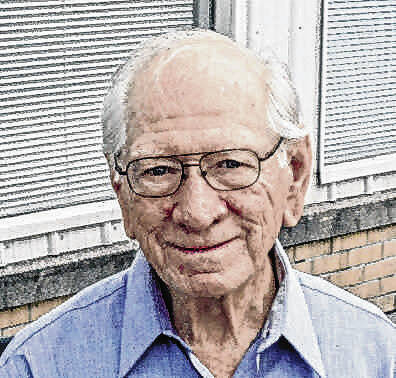
Don Hill
By Don Hill
Guest columnist
Since the big race is coming up, I thought I would tell you a few memories of the race.
Obviously, the styles of the race cars have changed as well as the speed that they can achieve, but mostly, you will note the change in the price of things.
I was looking through my collection of stuff (which Mary thinks I should put it all in the recycling bin) and I found a few items that might interest somebody. I was sure I went to the race in 1948, but I couldn’t find the program for it. Maybe I couldn’t afford the 50 cents. Anyway, I did find the 1949, ‘50, ‘51, ‘52 and ’53 programs.
I remember my cousin and I going to my first race. We went about a week early and parked in a person’s yard along Georgetown Road. I think it cost $5 for the week. It was right next to the track, so we could hear the cars practicing. I don’t recall the time trials being something people paid to see. Anyway, we went to the grocery store across the street from the track and purchased our $5 infield tickets.
By now, all around the front entrance were all sorts of food and souvenir stands. It was almost like a county fair. We spent our time hanging out there day and night.
Across the street was the West 16th Street Midget Speedway. Here, they were racing every night. Even some of the 500 drivers would race the night before the big race. I did find the 1948 program for that, so I know I was there.
The interesting thing about this program is it has a picture and advertisement for the Tucker automobile on the front cover. As you might know, the Tucker never went into production. Only a few demonstration models were made. I showed this to Big Al Unser, and he signed it. He said it was before his time, but he signed it anyway. This program cost 20 cents.
The night before the race, 16th Street was backed up four deep with parked cars for miles. It was covered completely with beer cans by the next morning. They would fire off a cannon at 5 a.m., and the race began. Not the 500, but everybody was trying to get a good spot in the infield.
Over the years of attending, I never had a seat. I was always in the infield. That’s where all of the action is before and even during the race. There were few bleachers on the infield side of the track. If you got there in time, you could park your car up to the fence and sit on it to watch the race. Many would back their pickup trucks up to the fence with nice seating.
Some even brought paint scaffolding to erect. Allowing scaffolding ended later around 1959 or ’60 when one of them fell over and some people were killed. We never took our car in that year but did all of the other years.
The infield was interesting. People from all over, cooking out and especially drinking. The first turn was a grassy area known at the “snake pit,” where you would find various people in various conditions doing various things, which I won’t go into. I have several stories to tell about those days, but I’m afraid our fine editor would censor them.
As a teenager, I had a closer connection to the race than most. Dr. Morris in my hometown of Fort Branch owned one of the race cars. Their garage was just a block from home, and I along with some of my buddies would hang out watching the mechanics work on the Morris Special at night.
One previous year, I had taken some closeup pictures of the cars in the garage area. The mechanics saw something in them that interested them and asked if they could use my pictures. I was in seventh heaven.
In case any race fans would like to have my collection (before Mary throws them out), I would consider letting them go. I also have ticket stubs. They bring back many wonderful memories, but race cars change, and so do old men.
Don Hill is a resident of Seymour and a longtime volunteer for Southern Indiana Center for the Arts. Send comments to [email protected].
